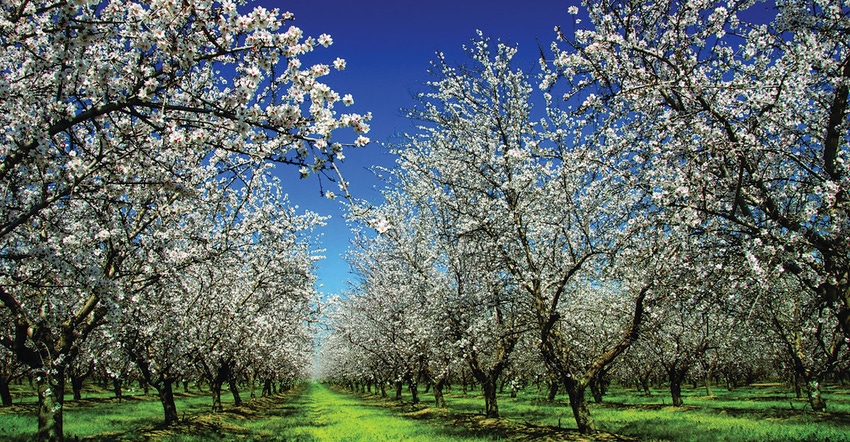
It’s like a continually flowing river — nothing stays the same except ever-present change. And while last year's activities delivered a multitude of highs and lows, one factor remained constant — almond tree acreage continued to get bigger with some being removed and even more being planted.
LandIQ in Sacramento was commissioned by the Almond Board of California to map out nut producing areas to determine acreage summaries, both bearing and non-bearing. Their determination showed there are 1,552,754 total standing acres of California almonds with 1,242,203 of them planted in 2017 or earlier and considered bearing.
Less than 1% of that bearing acreage produces organic almonds, but it does represent a segment for future growth. Wes Sperry of Sperry Farms is part of that effort, growing organically on 125 of his 1,100 acres in northern San Joaquin Valley, spanning both Merced and Stanislaus Counties.
“We anticipate more product demand and market availability of organics in the future,” he said. His family-run almond ranch has been growing nine different varieties of almonds since 1974 and the organic effort is relatively new.
“We transplanted fifth leaf, 50% Nonpareil, 25% Aldrich, and 25% Wood Colony, in July 2019. These three varieties are early-side harvest and that’s a big part of dealing with navel orangeworm control.“
The family-owned farm was drawn to organic for two reasons, one financial, one environmental. “Price-per-pound of organic almonds is definitely higher and gives us a chance to self-market our product away from the conventional market,” he said.
“Secondly, we have some pretty lofty sustainability goals and going organic makes the most sense to reach those goals,” he said. “Since we started the organic portion of our business, we’ve begun changing some of our conventional practices based on our experiences. We want to be a trendsetter in the organic almond market because there’s going to be a market share there that represents more opportunities for growers.
“It’s going to be beneficial for all of our farming practices as we move into the future because consumers want less use of herbicides and chemicals and that will drive what, and how, we farm down the road.”
Capay Hills Orchard
Among the advance guard in this slowly growing industry sector is Capay Hills Orchard near Esparto in central California where 1,400 trees (Nonpareil, Monterey, Fritz) were planted a decade ago. While almond farmers traditionally machine shake their trees to the orchard floor into windrows, “That’s not how we harvest,” said Operations Manager Brian Paddock. “We harvest some trees manually with poles and rubber sledgehammers or with a hydro-mechanical harvester that drops the nuts onto tarps so the nuts never touch the ground.
“We chose to farm organically because our home is in the middle of the orchard,” he said. “We drink the same water as our trees and we don’t want to subject our family to health concerns that ‘conventional’ farming operations can present. We also strongly believe in being good stewards of our land and grow our almonds using sustainable processes.”
Chico-based Heron Fox Farms is also a strong proponent of the organic sector. Their 27-acre, 4th generation family farm offers Nonpareil, Sonora, and Butte — organic, unpasteurized almonds — raw and sprout-able.
“We are organic, water-saving, and bee-friendly, because it makes a difference now --- and for the future,” Fox said.
Read more about:
AlmondsAbout the Author(s)
You May Also Like




